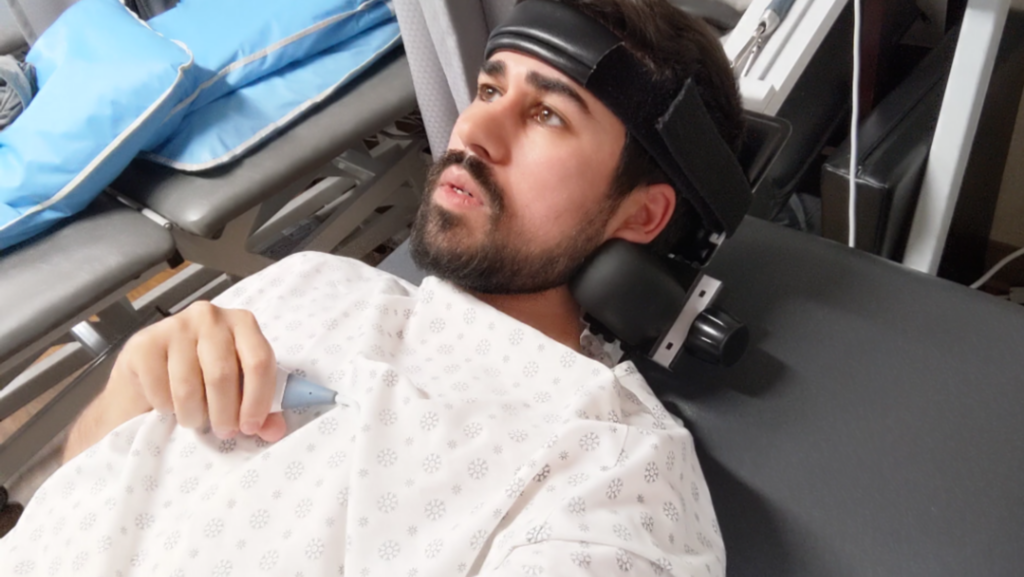September 27, 2020 | By Julius Melnitzer
You’re injured in an accident. You’re lost, alone and frustrated, and you’re looking for a lawyer.
Michael Zouhri of Edmonton knows how you feel. And that’s why he created PainWorth, free online software touted as ”the world’s first fully-automated app that helps you calculate the potential value of your personal injury claim”.

In 2019, an impaired driver hit Zouhri, then took off. Zouhri suffered permanent, life-altering injuries. He sought help from dozens of law firms. To no avail.
“The worst part was that they left me feeling like the insurers were going to hurt me,” he says. “But I felt the lawyers didn’t care about me either, and yet I didn’t have a choice but to work with them. Otherwise, I might not recover anything. I hated that feeling.”
What he suspected was that many of the 200,000 Canadians who sustain personal injuries annually felt much the same way. A trip to a physical law library (“The information just wasn’t available online,” Zouhri says) and the support of lawyer friends led him to a solution.
“Eventually, I saw a clear path to automating the process and applying data science to make it more objective and better,” he explains.
The PainWorth system analyzes thousands of cases, performing the calculations that provide insights inaccessible to individuals working on their own.
“We’re not talking about a black box here,” Zouhri says. “We show users the steps and calculations involved, which allows them to understand and have confidence in their claim.”
PainWorth not only quantifies claims: it also provides high-level information about the overall process.
“The site tells users what the steps look like, how long they take, and what they can expect in the way of court fees,” he says.
So far, 300 to 400 users have settled some $10 million worth of cases on their own after using the software.
“In Alberta, about three percent of people with claims have accessed our systems since we went online in October 2019,” Zouhri says.
And PainWorth’s user base is growing rapidly: some 1200 individuals used the system in July. Month-over-month growth rate stood at about 35 percent when last measured earlier this year.
That’s not surprising, given that, for many, PainWorth is a last resort.
“People in rural and remote communities have a hard time finding help,” Zouhri says. “And folks with smaller claims have a hard time finding lawyers who will take their case.”
It’s not that PainWorth doesn’t have some way to go.
“The system is still in the early stages,” Zouhri explains. “The workflow’s a bit clunky and there are many features still pending.”
So far, however, PainWorth appears to have achieved its main purpose.
“Users tell me is they now had some power where they previously felt they had none,” Zouhri says.
As it turns out, 30 percent of users have lawyers.
“Clients can use PainWorth to augment the advice they’re getting from lawyers,” says the organization’s general counsel, Matthew Blimke of Prowse Chowne LLP in Edmonton, who has a background in personal injury law but now practices both general litigation and corporate law. “And lawyers can use it to help clients be better clients.”
Still, some lawyers find PainWorth threatening.
“Even I felt a bit threatened,” Blimke says. “When you look at this kind of software, you can start to wonder what’s going to be left for lawyers like me.”
What Blimke points out, however, is that PainWorth’s “sweet spot” is claims that are not economically feasible for lawyers on an individual basis.
Zouhri is quick to acknowledge that PainWorth doesn’t work for complicated cases.
“When you get past $100,000 or so for pecuniary and non-pecuniary damages, you need a lawyer because sophisticated questions can come into play,” Zouhri says.
But that doesn’t mean lawyers won’t find the software helpful.
“PainWorth might help practitioners take smaller cases in volume and make them economically worthwhile,” Blimke says. “The software can flesh out what the industry is already able to do.”
In one instance, an Edmonton firm focused on family law took on a client with a rare injury to the individual’s genital regions.
“They couldn’t find any case law on the appropriate damages,” Zouhri says. “But we found some in our database and were able to provide a range.”
However all that may be, it’s a hell of a feel-good story.
“It’s nice that what started as a personal tragedy has been making a difference for others,” Zouhri says.
RELATED STORIES
Rush to adapt misses the profession’s biggest problem: unrepresented litigants
Will COVID turn lawyers from Luddites to leaders?
Justice and the pandemic: pushing for modernization
Machine learning is helping to lighten legal grunts’ minutiae-laden jobs
Julius Melnitzer is a Toronto-based legal journalist and editor, writing coach, and media trainer for lawyers.